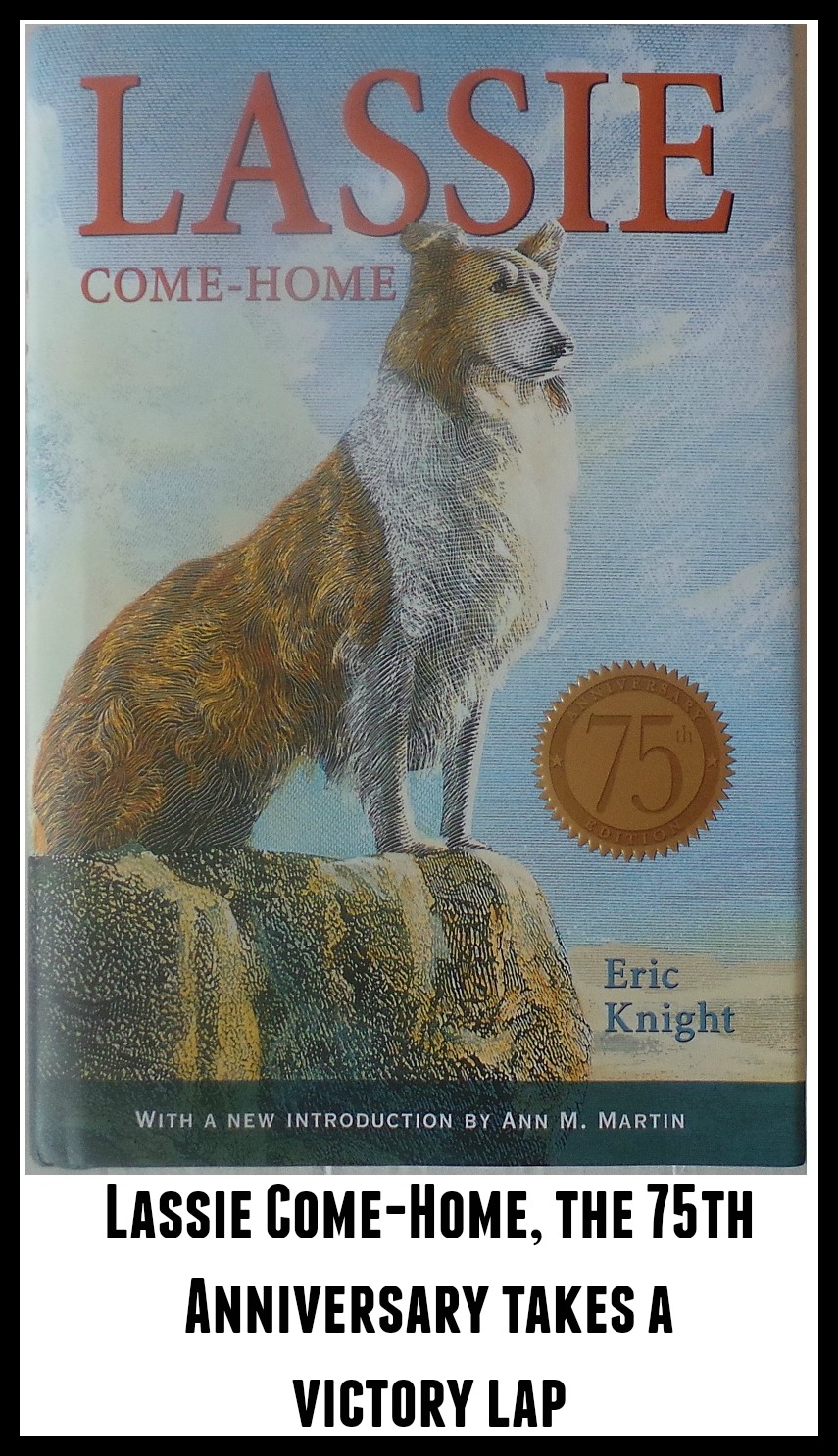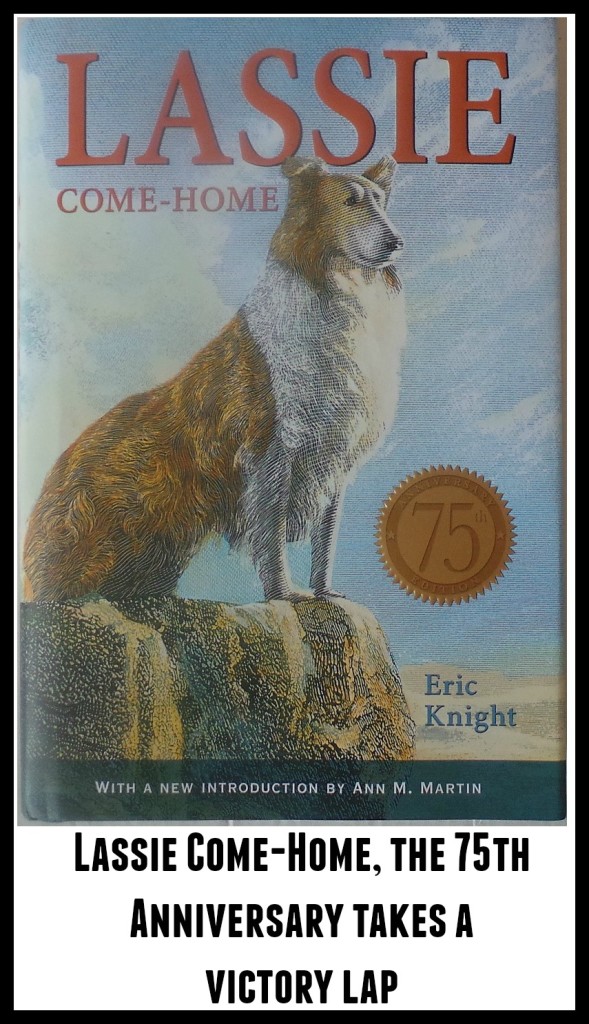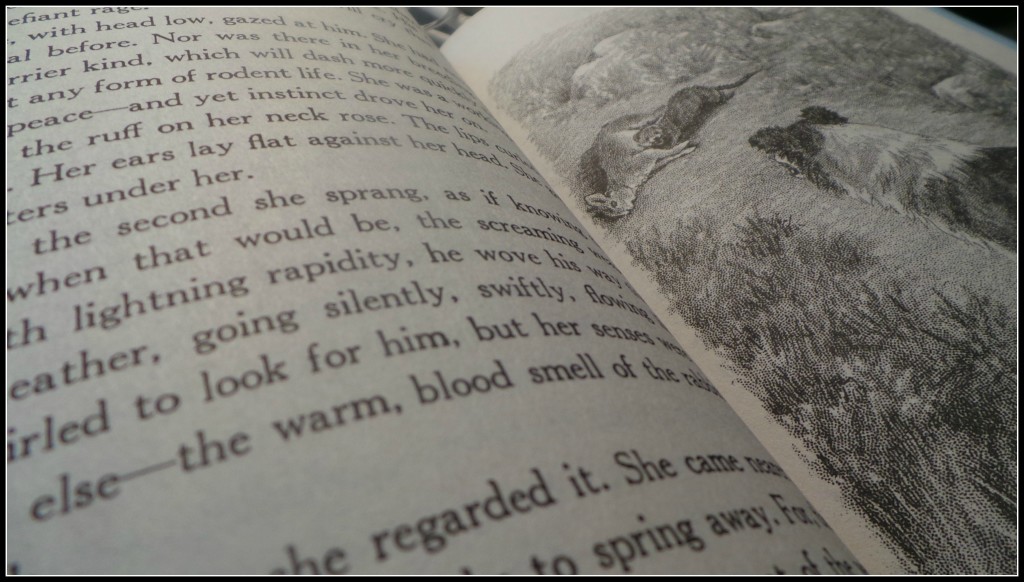Lassie Come-Home celebrates its 75th year in print. In 1940 the now-classic story of everyone’s favorite Collie was just coming out. Three years later it was made into a movie where MGM executives were so moved by the story that they kept ordering new scenes to be filmed. The book, Lassie Come-Home by Eric Knight, has a special forward by Ann M. Martin of the Baby-sitters Club series and a brand new, separate picture book for younger children.
As a child I never read Lassie. I never saw any movie or television version of the dog, but I was certainly aware of her legacy. For the record, Lassie is a girl in the book, but a boy dog was the on screen in 1943 because the girl kept shedding. Recap: she is a legend in the business.
So when I read the book it was fresh material. Lassie Come-Home takes place in depression era England. It’s a rural area where the Carraclough’s have the prettiest, smartest dog in town, but the family has fallen on really hard times. After years of refusing to sell Lassie to a jealous Duke who lives in the area they’re given an offer that they can’t refuse. I think the Duke paid the family $15, but it was enough to purchase food.
Their son is despondent and Lassie breaks out of the Duke’s house on several occasions, only to be taken back. Eventually the Duke takes Lassie to his estate far away in Scotland where Lassie again escapes and her adventure home begins.
From the perspective of a modern day reader (who has had several rescue animals) some things stood out for me. At one point in time dogs were worker animals. Yeah, I often forget that in looking at our Golden Retriever on the floor. Secondly, it’s a harsh, scary world for a previously domesticated dog who is trying to get home.
When Lassie escapes from the Duke’s castle in Scotland she’s going through rough county, river wilds and has to forge-and kill for her food. The chapter where she realizes that man has always fed her, she’s hungry and had been on the run for five days. She sees a weasel coming down the trail with a freshly killed rabbit in its mouth. From there her instincts kick in and she realizes that she must eat.
It’s a fascinating chapter because of the internal dialogue she has with herself, remembering her life back home, what Joe or his father would’ve said and what becomes a good dog. That chapter is called The Fight for Existence and sums up what some people may not like about the book.
Some reviews have said that this book might be inappropriate for children. The recommended age for Lassie Come-Home is 8-12 and I fully agree with that. There are real elements to the book that add to the drama, story and facts that have made this story so timeless.
It’s a very well written book that accurately depicts the depression era family, what they sacrifice and how it impacts them. The dialect might be tough for some of the younger readers to follow, but after a couple words (and asking for help) they’ll figure it out and proceed with the wonderful story that follows. Lassie Come-Home also has a sister picture book that is good for ages 4-8.







 Facebook
Facebook Twitter
Twitter Flickr
Flickr GooglePlus
GooglePlus Youtube
Youtube